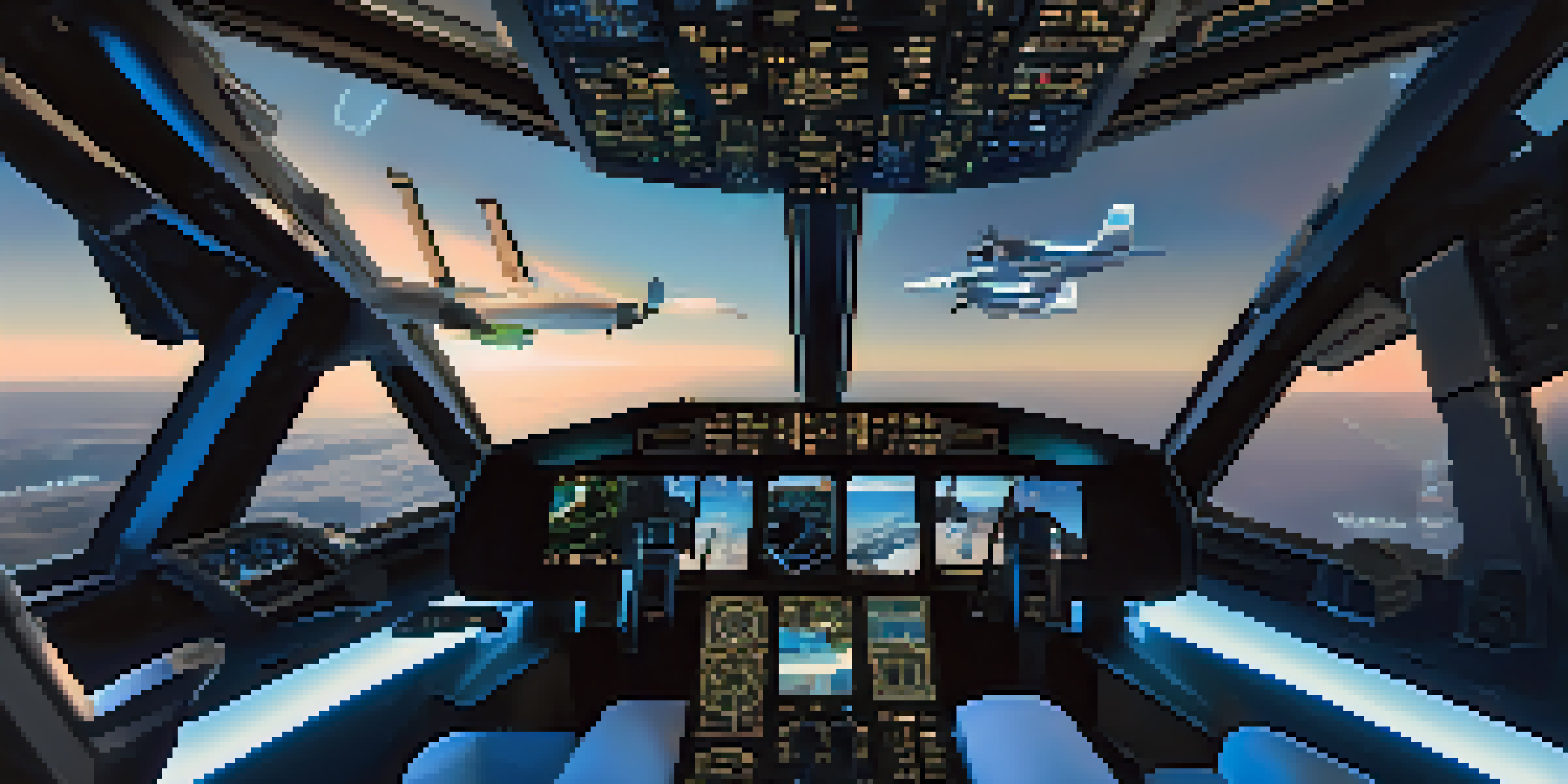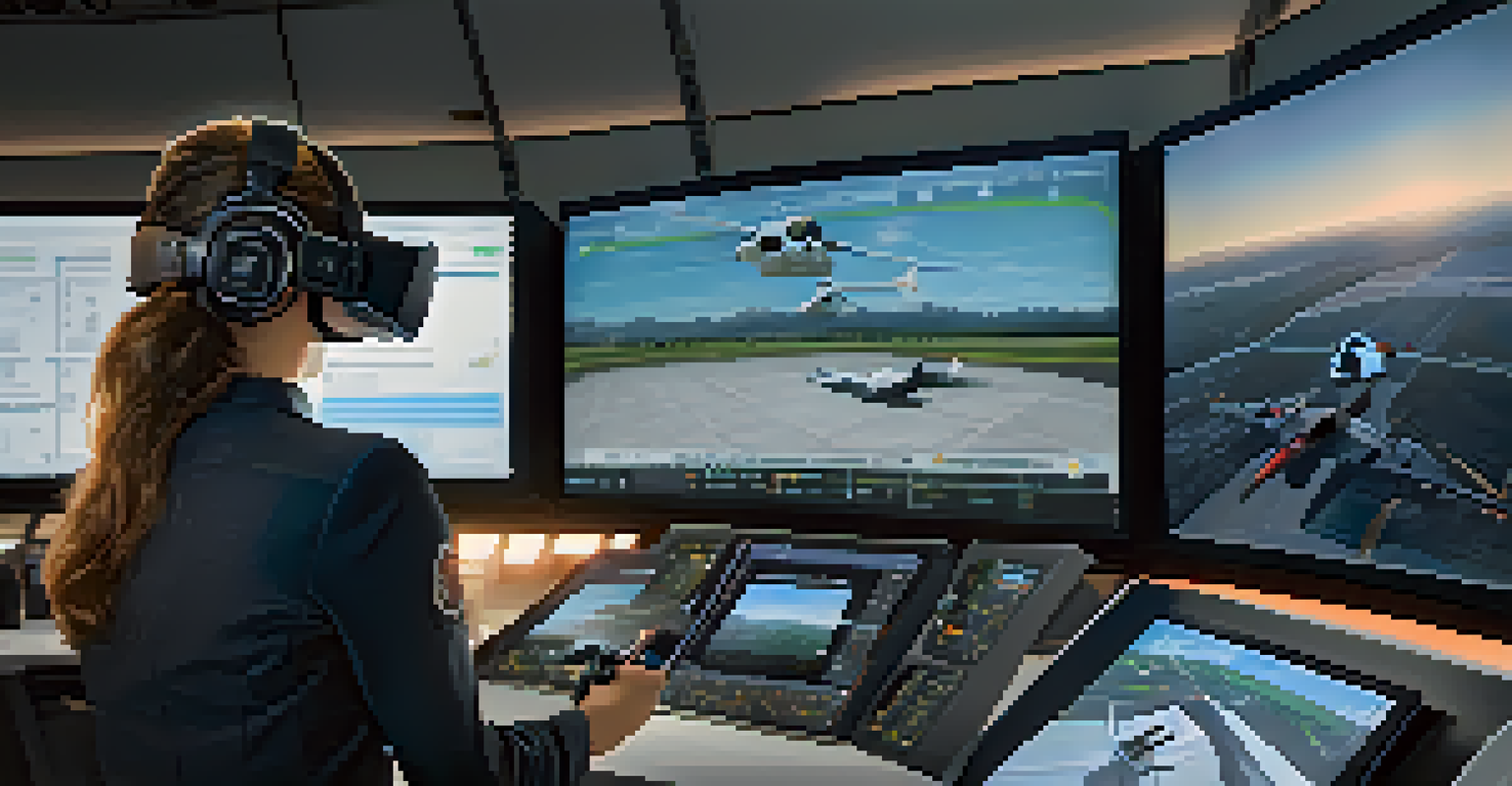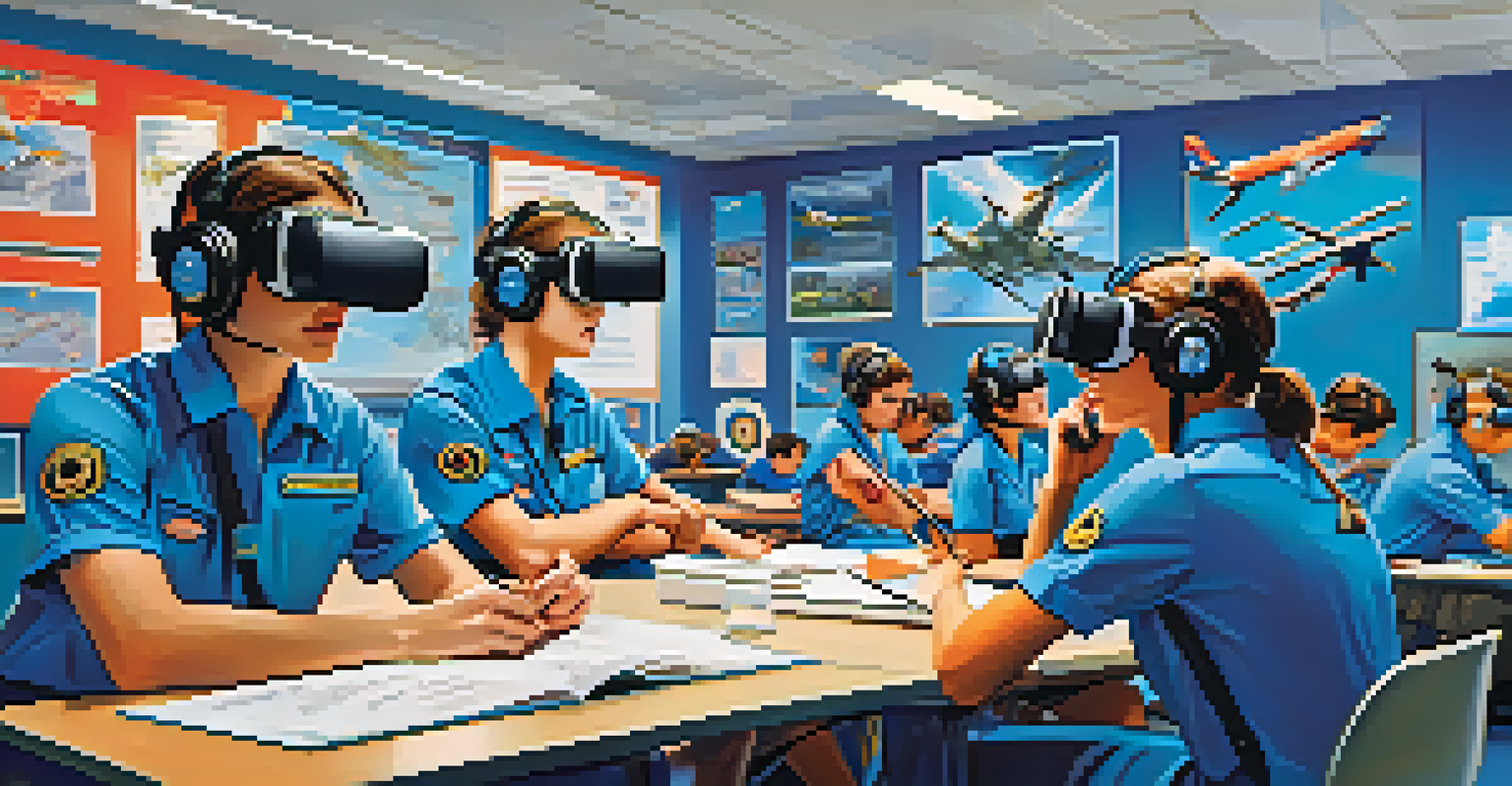VR Technology in Aviation Training: Safety and Efficiency Boost

Understanding VR Technology in Aviation Training
Virtual Reality (VR) technology immerses users in a simulated environment, providing a powerful tool for aviation training. By donning VR headsets, trainees can experience lifelike scenarios without the risks associated with real-world flying. This technology allows pilots and crew members to practice emergency procedures and complex maneuvers in a safe, controlled setting.
Virtual reality is the ultimate tool for immersive learning, allowing individuals to experience scenarios that enhance their skills and confidence.
The immersive aspect of VR enhances learning retention, making it easier for trainees to remember critical procedures. Instead of passively watching instructional videos, they actively participate in simulations that mimic real flight situations. This hands-on approach can significantly improve the readiness of aviation professionals.
Additionally, VR technology can simulate a variety of weather conditions and equipment failures that pilots might encounter. This exposure helps trainees develop problem-solving skills and adaptability, crucial attributes for successful aviators.
Enhancing Safety through Realistic Training Scenarios
One of the standout benefits of VR technology is its ability to create realistic training scenarios that enhance safety. For instance, pilots can practice navigating challenging weather or critical in-flight emergencies without the stakes of actual flight. This kind of preparation can make a significant difference when facing such situations in real life.

Moreover, VR training allows instructors to assess how trainees respond to various scenarios. They can observe decision-making processes in real-time and provide immediate feedback, fostering a deeper understanding of correct protocols. This direct engagement not only sharpens skills but also builds confidence.
VR Enhances Aviation Training Safety
Virtual Reality technology allows pilots to practice emergency procedures in a risk-free environment, improving their readiness for real-life situations.
The more familiar pilots and crew are with emergency procedures, the more likely they are to respond effectively under pressure. By repeatedly experiencing these scenarios in VR, they become better equipped to handle the unexpected when it matters most.
Improving Efficiency with Flexible Training Options
VR technology also brings efficiency to aviation training programs by offering flexible scheduling. Trainees can practice whenever it suits them, reducing the need for extensive facility bookings and instructor availability. This flexibility helps streamline training processes and allows for more hours of practice.
The future of aviation training lies in technology that caters to diverse learning styles and fosters a safe environment for practice.
Furthermore, the ability to conduct training sessions remotely can save both time and resources. Instructors can deliver lessons and monitor progress from different locations, making it easier to accommodate busy schedules. This is particularly beneficial for airlines with multiple bases or for individuals training in various locations.
As a result, airlines can optimize their training programs, leading to quicker certification times and a more skilled workforce. Enhanced efficiency not only benefits trainees but also helps airlines maintain high safety standards across the board.
Cost-Effectiveness of VR Training Solutions
Investing in VR technology for aviation training can lead to significant cost savings over time. Traditional training methods often require expensive simulators and aircraft, along with the associated operational costs. VR training can offer a more affordable alternative without compromising on quality.
By reducing the need for physical resources, airlines can allocate funds to other critical areas, such as upgrading technology or improving facilities. This cost-effectiveness makes VR training an attractive option for both large airlines and smaller flight schools.
Flexible VR Training Saves Time
The flexibility of VR training enables trainees to schedule sessions at their convenience, streamlining the training process and accommodating busy lifestyles.
Additionally, the scalability of VR training means that as demand for training grows, airlines can easily expand their programs without extensive additional costs. This adaptability ensures that training keeps pace with the ever-evolving aviation industry.
Addressing Individual Learning Styles with VR
Everyone learns differently, and VR technology has the unique ability to cater to various learning styles. Visual learners benefit from the immersive environments, while kinesthetic learners can engage in hands-on practice. This personalized approach can lead to a more effective learning experience for all trainees.
Moreover, VR training allows for repetition without the concern of wasting resources. Trainees can revisit challenging scenarios as many times as needed to master the skills required. This degree of practice can be especially useful for those who may struggle with certain concepts during traditional training.
By accommodating diverse learning preferences, VR technology ensures that all trainees have the opportunity to succeed. This inclusivity not only fosters a positive learning environment but also helps create well-rounded aviation professionals.
The Future of VR in Aviation Training
As technology continues to advance, the future of VR in aviation training looks promising. Innovations such as improved graphics and haptic feedback systems are on the horizon, which will enhance the realism of training scenarios even further. This evolution could lead to an even more effective training experience for pilots and crew members.
Additionally, the integration of artificial intelligence (AI) into VR training could personalize the learning journey further. AI can analyze trainees' performance, adapting scenarios to target specific areas for improvement. This level of customization can accelerate the learning process, making training more efficient.
Cost-Effective VR Solutions for Airlines
Investing in VR for aviation training reduces the need for expensive physical resources, leading to significant long-term cost savings for airlines.
Ultimately, as VR technology becomes increasingly integrated into aviation training programs, we can expect to see a workforce that is not only well-prepared but also highly skilled. This shift will contribute to overall safety and efficiency in the aviation industry.
Real-World Success Stories of VR in Aviation Training
Several airlines and flight schools have already begun implementing VR technology into their training programs, with impressive results. For example, a major airline reported a significant reduction in training time and costs after adopting VR simulations for their pilot training regimen. This success story highlights the tangible benefits that VR can bring to aviation.
Flight schools utilizing VR technology have also noted improved student engagement and retention rates. Students are more motivated to learn when they can experience realistic flight scenarios, leading to better outcomes in their education and training. This increased enthusiasm can translate to a more competent and confident future workforce.

These real-world examples serve as a testament to the transformative impact of VR technology in aviation training. As more organizations recognize the value of this approach, we can expect to see wider adoption across the industry, ultimately enhancing safety and efficiency for all.